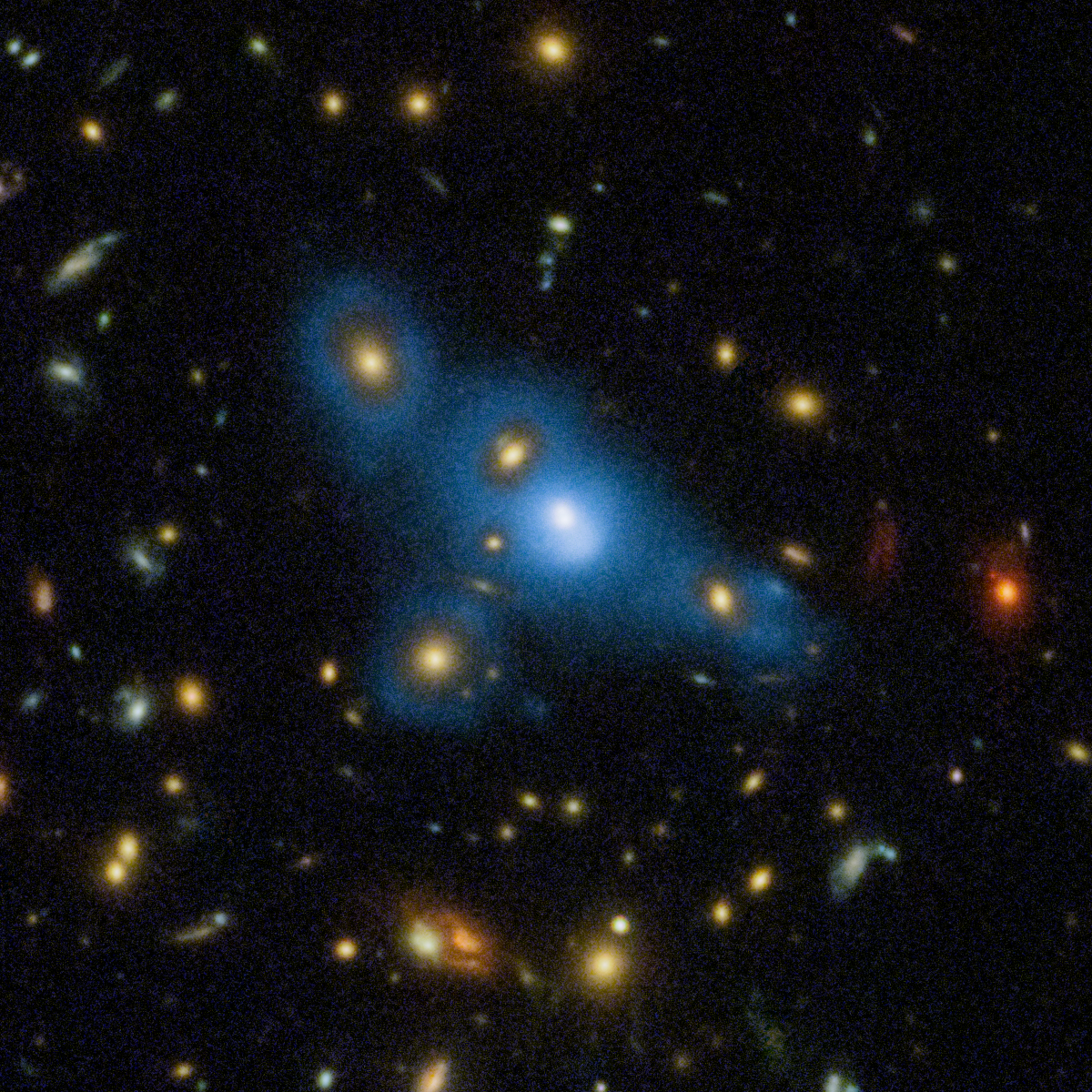
Summary
Orphaned Stars Were Lost into Intergalactic Space Long Ago
In the 1960s sci-fi television show “Lost in Space” a small family of would-be planetary colonists get off course and lost in our galaxy. But truth is stranger than fiction when it comes to Hubble Space Telescope discoveries. Thanks to Hubble, astronomers now know about entire families of stars – and presumably their planetary systems – that don’t even have a galaxy to call home. We are nestled inside the sprawling Milky Way galaxy, an empire of stars. But there are many stars wandering about inside giant clusters of hundreds or thousands of galaxies. These stars are not gravitationally tied to any one galaxy in a cluster. The nighttime sky would appear inky black and starless to any inhabitants orbiting their parent sun, save for the feeble soft glow of neighboring galaxies peppering the sky.
Collectively, the dim dispersed glow from these wayward stars forms a background called intracluster light that is evidence they are lurking around. Although the first clues came in 1951, Hubble can easily detect this light even though it’s 1/10,000th the glow of the night sky as seen from the ground-based telescopes. Billions of years ago galaxies would have been smaller than seen today, and they probably shed stars pretty easily because of a weaker gravitational pull. (The escape velocity from our Milky Way is over 1 million miles per hour). Understanding the origin of intracluster light could give astronomers new insights into the assembly history of entire galaxy clusters.

